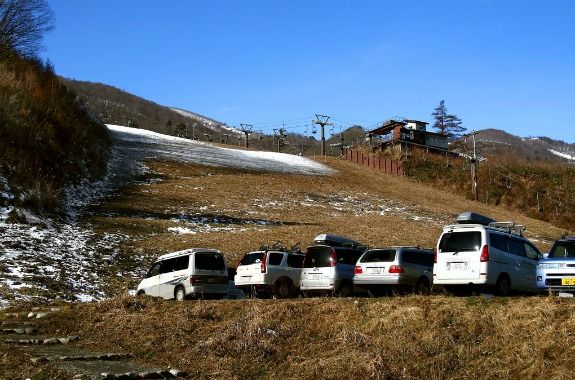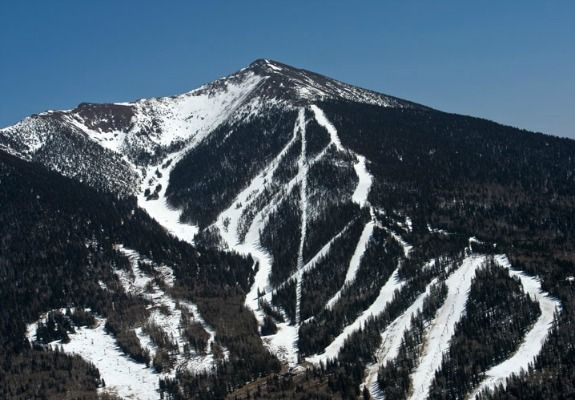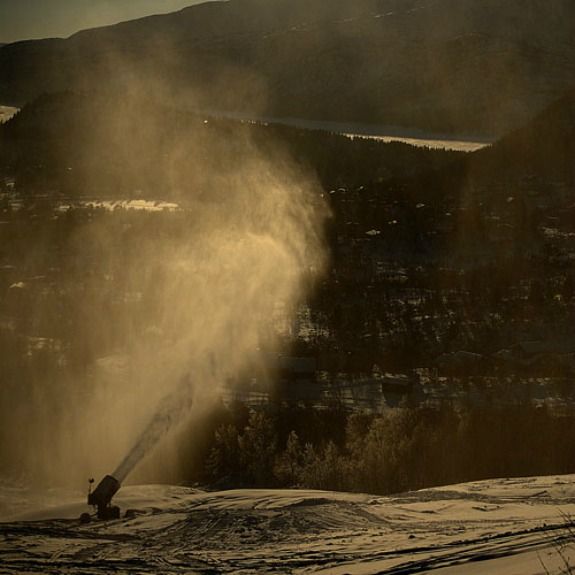As the World Warms, the Future of Skiing Looks Bleak
Climate change is delivering serious wounds to the winter sport all over the globe
/https://tf-cmsv2-smithsonianmag-media.s3.amazonaws.com/filer/20121211032110SkiingChacaltayaSMALL.jpg)
As polar bears watch their winter ice recede farther and farther from boggy Arctic shores each year, skiers may notice a similar trend occurring in the high mountain ranges that have long been their wintertime playgrounds. Here, in areas historically buried in many feet of snow each winter, climate change is beginning to unfurl visibly, and for those who dream of moguls and fresh powder, the predictions of climatologists are grim: By 2050, Sierra Nevada winter snowpack may have decreased by as much as 70 percent from average levels of today; in the Rockies, the elevation of full winter snow cover may increase from 7,300 feet today to 10,300 feet by the year 2100; in Aspen, the ski season could retreat at both ends by a total of almost two months; and throughout the Western United States, average snow depths could decline by anywhere between 25 and—yep—100 percent.
These, of course, are just visions of wintertime future produced by climatologists and their computers—an easy venue for climate change naysayers to assault. In fact, a recent report commissioned by Protect Our Winters, an environmental organization, and the Natural Resources Defense Council on declining snow levels also noted that annual snowpack depth has remained stable or even increased in parts of California’s Sierra Nevada. Another study, published in January in Environmental Research Letters, foresaw similar outcomes, predicting that global warming could trigger counterintuitive winter cooling in certain parts of the Northern Hemisphere. But those findings seem tantamount to just the tip of the iceberg—which is undeniably melting. Because the thing is, global warming has already delivered serious wounds to the world’s ski industry. Europe, especially, has been hurting for years. Back in 2003, the United Nations Environmental Program reported that 15 percent of Swiss ski areas were losing business due to a lack of snow. A few years later, in 2007, one ski resort in the French Alps—Abondance—closed down entirely after a 40-year run. The closure came following a meeting of local officials, who reluctantly agreed that there simply wasn’t enough snow anymore to maintain the Abondance lodge as a ski operation. For several years, low snowfall had been attracting fewer and fewer tourists, and Abondance—once the recipient of millions of tourist Euros each year—began stagnating. The Abondance lodge and the nearby town of the same name lie at a little over 3,000 feet above sea level—low for a ski resort and, so it happens, right in the hot zone of 900 to 1,500 meters that climatologists warn is going to see the most dramatic changes in annual snowfall.

But more alarming than the Abondance shutdown is that which took place at almost six times the elevation, at Bolivia’s Chacaltaya Lodge, once famed as the highest ski resort in the world. Here, outdoorsmen came for decades to ski the Chacaltaya Glacier, which historically flowed out of a mountain valley at more than 17,000 feet. But that wasn’t high enough to escape rising temperatures. The glacier began retreating markedly several decades ago, and over a course of 20 years 80 percent of the icy river vanished. The lodge, which first opened in 1939 and was a training ground for Bolivia’s first Olympic ski team, closed in 2009.
Similar results of global warming can be expected in the American ski and snow sports industries. Already, as many as 27,000 people have lost their seasonal jobs in poor snow years in the past decade, with revenue losses as much as $1 billion, according to the recent study conducted for Protect Our Winters and NRDC. The study cites reduced snowfall and shorter winters as the culprits. In total, 212,000 people are employed in the American ski industry.
The irony of the ski industry’s impending troubles is the fact that ski resorts, equipment manufacturers and skiers themselves have played a role in fueling the fire that is melting the snows. The carbon footprint of the ski industry is a heavy one. Seventy million people visit the Alps alone each year to ski or otherwise play in the snow—and travel to and from the mountains is recognized as perhaps the most carbon-costly component of the industry. But excluding tourist travel, lodges and ski resorts are major users of energy and producers of trash. A 2003 book by Hal Clifford, Downhill Slide: Why the Corporate Ski Industry Is Bad for Skiing, Ski Towns, and the Environment, details the many ecological and cultural problems associated with the skiing industry. Among these is clear-cutting to produce those dreamy treeless mountainsides that millions of downhillers long for on many a summer day. The ski resort Arizona Snowbowl, for one, was lambasted last year for plans to cut down 30,000 trees—a 74-acre grove of pines considered holy by indigenous nations. And just prior to the kickoff of the 2006 Turin Winter Games, in Italy, The Independent ran a story under the headline “Is it possible to ski without ruining the environment?” The article named “ski tourism-induced traffic pollution and increasing urban sprawl of hotels and holiday homes in former Alpine villages to the visually intrusive and habitat-wrecking ski lifts” as faults of the industry. The article continued, noting that with the “spectre of global warming … now stalking the Alps,” the ski industry of Europe “is waking up to its environmental responsibilities—just in the nick of time.”

Right: “Just in the nick of time.” That article came out almost seven years ago, and look where we are now. The earth, by most measures, is warmer than ever, and snow is declining. A study just published in Geophysical Research Letters reported that locations in Eurasia have set new records for lowest-ever spring snow cover each year since 2008. In North America, according to the same report, three of the last five years have seen record low snow cover in the spring. It shouldn’t be any surprise, then, that commercial use of snow machines is on the rise. These draw up liquid water and blast out 5,000 to 10,000 gallons per minute as frosty white snow. It may take 75,000 gallons of water to lightly coat a 200- by 200-foot ski slope, and the energy-intensive machines have been blamed for their role in pollution and excessive water use. And while snow machines can serve as a crutch for limping ski resorts, the snow they produce is reportedly quite crummy in quality—and they’re anything but a cure for the greater problem.
Where do you like to ski? Have you seen more exposed rocks and muddy December slopes and snow machines at work? This article offers a summary of how several major ski regions in the world will feel the heat of global warming. Every mountain range around the world will feel the heat.
Will warmer winters mean richer skiers? In 2007, the mayor of the French Alps town of Abondance, Serge Cettour-Meunier, was quoted in the New York Times as saying, “Skiing is again becoming a sport for the rich,” explaining that soon only more expensive, high-elevation ski resorts would have enough snow for skiing.

Planning Your Next Trip?
Explore great travel deals
Smithsonian magazine participates in affiliate link advertising programs. If you purchase an item through these links, we receive a commission.
/https://tf-cmsv2-smithsonianmag-media.s3.amazonaws.com/accounts/headshot/Off-Road-alastair-bland-240.jpg)
/https://tf-cmsv2-smithsonianmag-media.s3.amazonaws.com/accounts/headshot/Off-Road-alastair-bland-240.jpg)